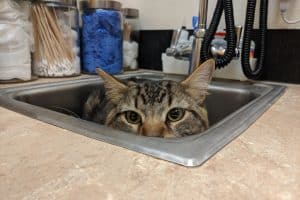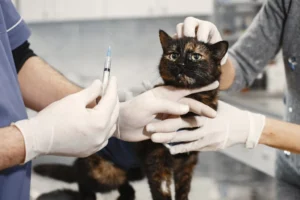Congratulations on taking the first step in ensuring your cat’s health and happiness!
Taking your cat to the vet for regular check-ups is crucial for detecting health issues early and preventing more serious problems down the line.
But how do you prepare for your cat’s first vet visit? What should you expect during the appointment, and how can you make the most of this crucial visit?
In this post, we’ll explore everything you need to know about your cat’s first vet visit. We’ll cover choosing a veterinarian, preparing for the appointment, what to expect during the visit, and post-visit care. By following our practical tips and guidance, you can make the experience as smooth and stress-free as possible for both you and your cat. So, let’s get started!
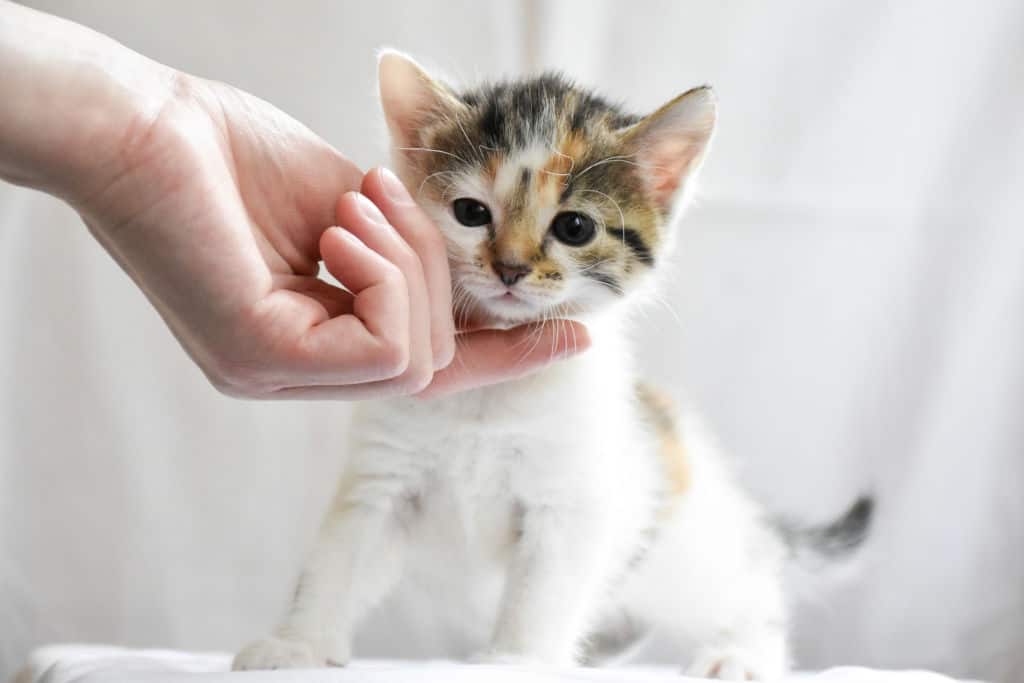
Choosing a Veterinarian
Choosing the right veterinarian for your cat is essential for their long-term health and well-being. There are some practical tips you can use to help you find a veterinarian who provides compassionate and comprehensive care for your cat.
When scouting potential clinics, pop in unannounced. How a clinic manages walk-ins can offer a sneak peek into their efficiency and patient handling.
Here are three tips for finding the right vet:
- First, consider your cat’s unique needs. Depending on your cat’s age, breed, and health, they may require specialized care. Look for a veterinarian who is knowledgeable and experienced in treating cats with similar needs to your own.
- Second, before you start an online search, ask for recommendations from other cat owners in your community. Word of mouth can be a valuable resource for finding a trustworthy and compassionate veterinarian. Ask those owners with similar cat breeds or ages to your cat.
- And third, before you commit, remember that you can always schedule a visit or consultation with the veterinarian to ask questions and get a sense of their approach to pet care. You don’t have to commit to anything, just to see whether the environment feels “right” to you.
By following these tips, you have a better chance of finding a veterinarian who will provide compassionate and comprehensive care for your cat where you’ll feel right “at home”.
Once again, we have a guide specially crafted to choosing the right vet here.
Finding a Veterinary Practice
Now comes the search. Before choosing a veterinarian, it’s important to research the veterinary practices in your area to find one that meets your needs and preferences. Here are some factors to consider when researching veterinary practices:
Convenience. Consider the location and hours of the veterinary practice to ensure it’s easy for you to get to appointments. Pick a vet close to you or one with flexible hours.
Check their website. Visit each veterinary practice’s website to get a sense of their services, policies, and values. Consider the services offered by each veterinary practice, including preventative care, diagnostic testing, surgical procedures, and emergency services.
Tip:
Look for reviews. Check online review sites such as Yelp, Google, and Facebook to read reviews from other pet owners. Look for trends and common themes in the reviews to get a sense of each practice’s strengths and weaknesses.
Tip:
Check for accreditation. Look for a veterinarian accredited by the American Animal Hospital Association (AAHA). This ensures that the veterinarian meets certain standards of care and excellence.
How to:
Staff and facilities. Visit each veterinary practice in person to see the facilities and meet the staff. You want to feel comfortable with the people who will be caring for your cat. Take a note of how the clinic stores their equipment and medications. Proper storage can be a direct indicator of the care they take behind the scenes.
Note:
Costs. Check the website or ask each veterinary practice about their fees and payment options to ensure their services fit your budget. Most clinics and hospitals will gladly discuss costs.
Trust your instincts. Ultimately, you want to choose a veterinarian who makes you feel comfortable and confident in their abilities to care for your cat. You might also want to observe other pets in the waiting room during your first visit. Happy, calm pets can signal a clinic that prioritizes patient well-being.
By researching veterinary practices in your area and considering these factors, you can find a veterinarian who will provide high-quality care for your cat.
Scheduling Your Cat’s Appointment
Once you’ve selected a veterinarian for your cat’s care, it’s time to schedule your first appointment. Here are some tips to help you prepare:
- Choose a convenient date and time for your appointment.
- Ask about any preparation you need to do before the appointment, such as fasting your cat before a blood test or bringing a stool sample.
- Gather any important information about your cat’s medical history and current health, such as recent illnesses, diet, routine, behavior, and vaccination records (if you have any).
- Prepare your cat for the visit by getting them used to being handled and transported in their carrier. We wrote about this in our other helpful guide about stress-free vet visits.
- Write a few questions or concerns to discuss with your veterinarian during the appointment.
- Stay calm and positive. Cats can pick up on their owner’s emotions, so it’s important to stay calm and positive during the appointment to help your cat feel relaxed and comfortable.
If you’re concerned about how your cat might behave, let the staff know upfront. It’s not uncommon for even the most docile cats to feel on edge in a new environment.
By following these tips, you can ensure that your first veterinary appointment is a positive experience for both you and your cat. Remember, your veterinarian is there to help you and your cat, so don’t be afraid to ask questions and discuss any concerns you may have.
In many ways, this appointment sets the tone for future visits. Being proactive during your cat’s first vet visit often leads to smoother subsequent check-ups.
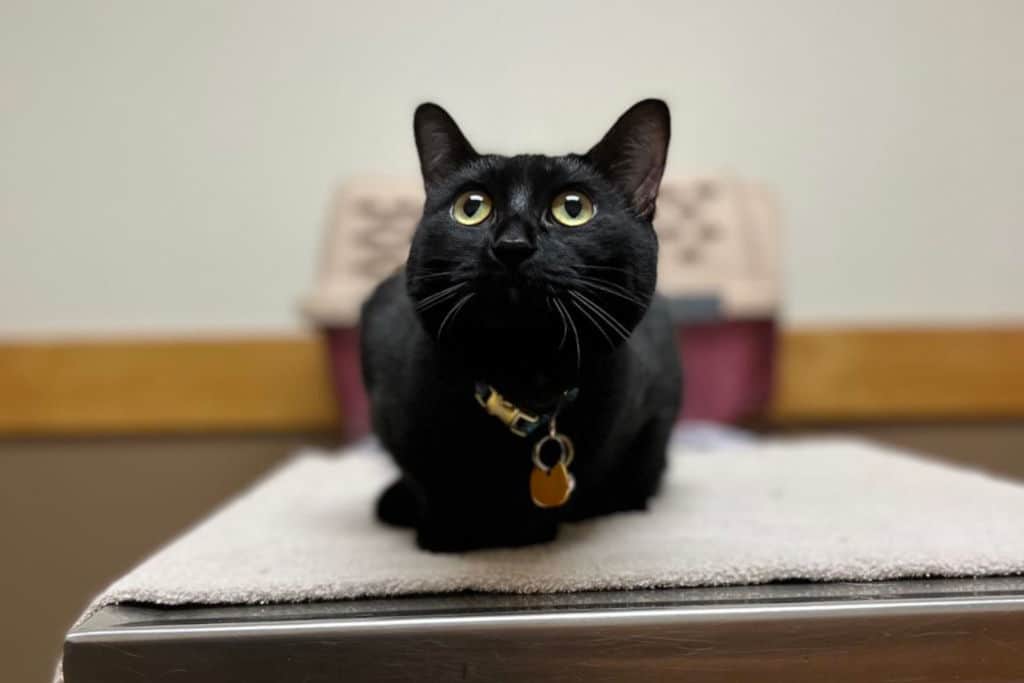
Preparing for the Visit
As your appointment with the veterinarian approaches, it’s important to prepare ahead of time to ensure a smooth and stress-free visit for you and your cat. Here are some tips to help you prepare.
Collecting Important Information
For a first vet visit with a kitten, there may not be much medical history to provide. However, you can still prepare by noting any concerns you have about the kitten’s behavior or development.
This could include things like changes in appetite or energy levels, litter box habits, or any unusual behavior. Additionally, you can bring any paperwork related to the kitten’s adoption or purchase, such as a health certificate or contract.
This kind of paperwork can provide valuable information about the kitten’s background, previous medical care, and any health issues they may have had before adoption.
What to Bring to the Appointment
In addition to any important information about your cat, you should also bring your cat’s carrier (if you have one), a list of questions or concerns to discuss with your veterinarian, and a stool sample if requested by your veterinarian.
Bringing your cat’s favorite toy or blanket can also help them feel more comfortable during the visit.
Preparing Your Cat for the Visit
One of the most important things you can do is get your cat used to their carrier before the appointment.
Train your cat to use the carrier for a few days. Leave the carrier out in a familiar area of your home and encourage your cat to explore it on their own. You can also try placing treats or their favorite toys inside the carrier to create a positive association.
It’s very important to practice handling your cat at home to get them used to being touched and examined by a veterinarian. This can include checking their ears, paws, and teeth.
Try to stay calm and positive during the vet visit to help your cat feel at ease. Talk to your cat in a soothing voice and provide plenty of positive reinforcement, such as treats and praise, to reward good behavior.
And don’t worry – if your cat becomes stressed or anxious during the visit, your veterinarian may be able to provide calming techniques or even some mild medications to help them relax.
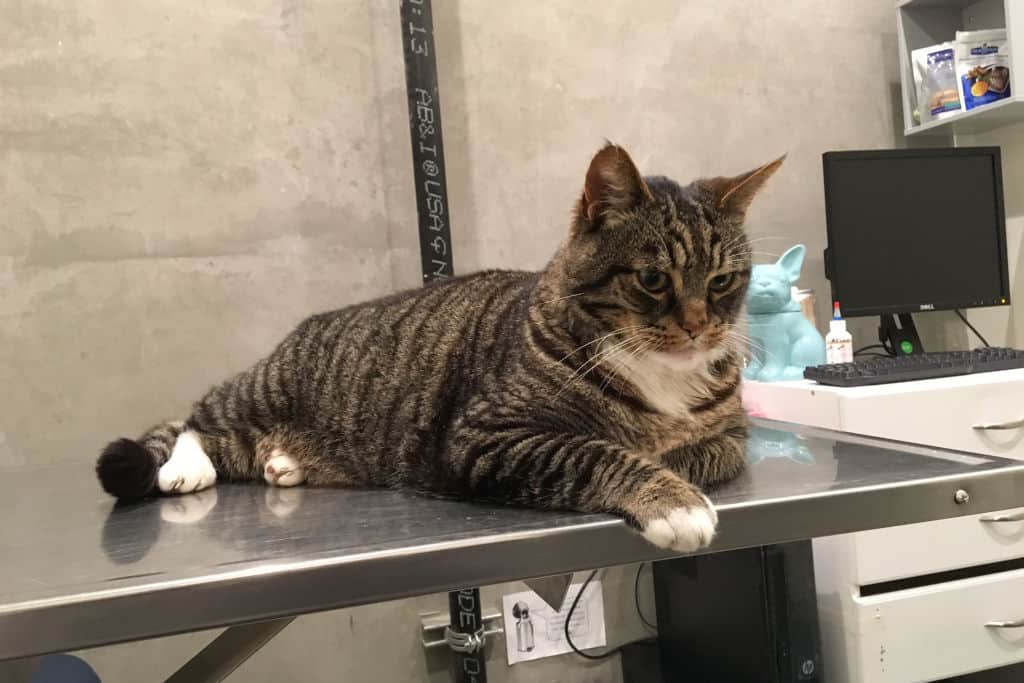
During the Vet Visit
Understanding what to expect during the visit can help ease some of the anxiety you may be feeling if you’ve never been to the vet. Here are some things you can expect during a typical vet visit.
Physical Exam
The physical exam is used simply to assess the overall health of your cat. This may include checking their eyes, ears, nose, teeth, skin, coat, and body condition. They may also listen to their heart and lungs, check their temperature, and feel for any lumps or abnormalities.
This is a good opportunity to ask any questions or voice any concerns you may have about your cat’s health.
Note:
Vaccinations and Parasite Control
If your cat hasn’t received any vaccinations, your veterinarian will recommend necessary vaccinations to protect them against common diseases. They may also recommend:
- parasite control measures such as flea and tick prevention,
- heartworm prevention,
- and deworming,
to ensure your cat is healthy and protected.
Weight and Overall Health Monitoring
Monitoring your cat’s weight and overall health is crucial for catching and treating any health issues early on. Your veterinarian may recommend a specific diet or exercise plan for your cat, depending on their age, weight, and overall health.
They may also provide recommendations for preventive care, such as dental cleanings or bloodwork, to help maintain your cat’s health.
Tip:
Other Tests and Services
Depending on your cat’s age, health, and history, your veterinarian may recommend additional tests or services such as blood work, urinalysis, dental cleanings, or senior wellness exams. These tests can help detect underlying health issues and provide a baseline for future visits.
Note:
Post-Visit Care
Your cat’s health and wellness is a top priority, and their first visit to the veterinarian is a key step in maintaining it. After the visit, there are several things you can do to ensure your cat stays healthy and happy.
Follow-Up Care and Appointments
Your veterinarian may recommend follow-up care or appointments based on their exam findings. These may include vaccinations or additional testing. It’s important to follow these recommendations to keep your cat healthy and prevent any potential health issues.
You can also ask your veterinarian for any additional tips or recommendations for caring for your cat at home.
Maintaining Your Cat’s Health and Wellness
To maintain your cat’s health and wellness, it’s important to provide them with proper nutrition, exercise, and grooming. You can also keep an eye out for any changes in their behavior or appearance and report them to your veterinarian if necessary.
By taking an active role in your cat’s care, you can help them live a happy and healthy life.
My Cat’s Vet Visit: A Positive Experience
As I was waiting for the vet to examine my cat during her first visit, I couldn’t help but feel nervous. My cat, usually fearless and adventurous, was now meowing nervously in her carrier. The unfamiliar sights, sounds, and smells of the vet’s office seemed to overwhelm her.
However, with the help of the friendly and knowledgeable veterinarian and staff, who took the time to patiently introduce themselves to my cat and offer treats, she soon forgot about her fear of the vet and allowed them to conduct a thorough physical examination.
Looking back, I’m glad that I took my cat to the vet for her first visit. It allowed me to catch any potential health issues early on, like the time when my cat was showing subtle signs of dental problems that I wouldn’t have noticed without the veterinarian’s trained eye and expertise.
So if you’re feeling nervous or unsure about taking your cat to the vet, don’t worry. With a little bit of preparation and the right veterinarian, your cat can have a positive and stress-free experience, just like mine did.
Alex, a passionate animal lover, has experience in training and understanding animal behavior. As a proud pet parent to two dogs and three cats, he founded AnimalReport.net to share insights from animal experts and expand his knowledge of the animal kingdom.

